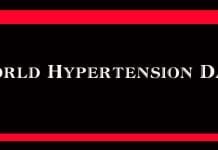There is a need to raise awareness that the symptoms of heart disease manifest differently in women
INVC NEWS
Recent research indicates that heart disease is the number one killer in women, causing 1 in 3 deaths each year.[1] Although women are likely to develop more complications, the symptoms in them are often ignored given that the predominant narrative of heart health is male-centric. There is thus a need to focus on heart health in women; and raise awareness among them and the general population.
There is a prevalent myth that pre-menopausal women have lesser chances of developing heart attacks due to protection from estrogen. However, clinical experience and research indicates that heart diseases kill as many women as men. Women also have worse prognosis and chances of survival in the event of a heart attack.
Speaking about this, Dr Sameer Mehrotra,Director – Heart & Rhythm Care Clinic, East Patel Nagar, Delhi And, Director – Primus Heart Institute at Primus Super Speciality Institute,
Chanakyapuri said, “The symptoms of heart disease in women are more likely to be ignored or missed by them, their families as well as caregivers. The reason for this is that when it comes to women’s health, the focus is mostly on cancers, reproductive health, and deficiencies. The warning signs of heart problems in women are also different as they do not experience the characteristic chest pain and may develop pain in the jaw. Due to this, women are not diagnosed and treated in a timely manner. It is important to bring heart diseases in women into light through awareness campaigns. They should also undergo routine preventive heart health check-ups apart from following a healthy lifestyle.”
Some risk factors for heart disease in women are hypertension, diabetes, obesity and sedentary lifestyle, metabolic syndrome, high cholesterol, PCOS, family history of the condition, and habits like smoking and drinking. It is important to not ignore left-sided chest pain or heaviness on rest or exercising, breathlessness on exertion, uneasiness with sweating, giddiness or fainting episodes, and sudden rise or fall of blood pressure.
Adding further, Dr Sameer Mehrotrasaid, “The underlying message is that it is time to focus on the heart health of women as much as men. Early corrective lifestyle changes and preventive measures can help combat the risk factors and avoid complications. Women should be aware of the signs and symptoms and take adequate care of their health through preventive screening health check-ups. This includes diagnostic tests such as ECG, Stress Echo, TMT, Echo, and CT Angio on a case-to-case basis as advised by the doctor.”
In some cases, as required, the doctor may recommend an angiography. If a heart ailment is detected through angiography, treatment and management is carried out through interventions such as angioplasty with stenting. Angioplasty is a treatment that is used to restore and improve blood flow. A long, thin tube (catheter) is inserted into the narrowed part of the artery. A wire with a deflated balloon is then passed through the catheter to the narrowed area. The balloon is inflated, compressing the deposits against the artery walls. A stent is often left in the artery. Most stents release medication to help keep the arteries open.
Some do’s and don’ts for women
Women should follow certain do’s and don’ts to prevent heart-related complications.
· Do not ignore routine preventive heart health checkups.
· Undertake routine exercise for at least 30 minutes every day.
· Quit smoking as women with this habit have an increased risk of developing heart disease at an early stage. Even passive smoking can be detrimental to heart health and exposure must be avoided.
· Do not consume alcohol beyond the permissible limit of 30 ml per day
· Focus on healthy eating habits.
· Donot delay in consulting with a doctor if any of the following symptoms are present: left sided chest pain or heaviness on rest or exercising, breathlessness on exertion, uneasiness with sweating, giddiness or fainting episodes, sudden rise or fall of blood pressure.
_________________
Disclaimer: “Any and all the Information provided in the article are independent views expressed by Dr Sameer Mehrotra, Dr Sameer Mehrotra, Director – Heart & Rhythm Care Clinic, East Patel Nagar, Delhi And, Director – Primus Heart Institute at Primus Super Speciality Institute, Chanakyapurifor general overview and educational purposes only.”
















